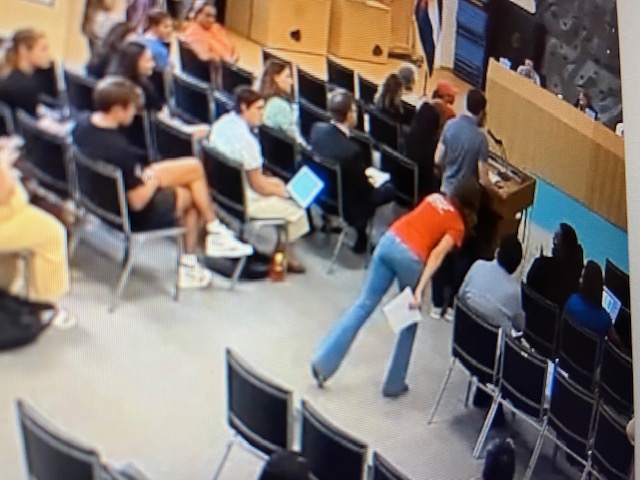Editor’s note: This article originally appeared on the website of A+ Colorado, one of Boardhawk’s partner organization. It was written by Mary Wilson, A+ Director of Communications and Engagement.
By Mary Wilson
On Tuesday, Sept. 29, Gov. Jared Polis addressed citizens of Colorado with one message: Please enroll your child in school.
“We know that the potential learning loss for our highest needs kids: English language learners, students with disabilities, low income students can have implications for years to come,” Polis said. “McKinsey & Company estimated that many k 12 students in the US could lose 60 to $80,000 of lifetime earnings as a result of COVID related learning gaps if they’re not enrolled in school, or miss a year or miss half a year.”
This estimate is from a June 1 report on the achievement gap, which shows that students are at risk for a significant learning loss. It mirrors Polis’ plea, which is that even if parents aren’t ready to send children back in school, they should be enrolled in their districts’ online system.
“There are many public online programs in our state we have an enrollment, you can enroll them in any public school online program you want for free,” he said. “And make sure that they at least are keeping up until they’re ready to safely go back.”
October Count: Engagement online is tied to funding
This comes right before October Count, the official student membership headcount for all Colorado public school districts. When students are enrolled, scheduled and in attendance as of the official count day, the district receives an average of $7,400 in per pupil operating revenue.
According to reporting by the Colorado Sun, the Colorado Department of Education will “help soften the blow by using an averaging provision that takes into account a district’s enrollment for recent years.”
“The shuffling of students could add to the financial distress districts are already shouldering with rising costs because of the coronavirus and funding cuts spurred by the economic downturn that has resulted from the pandemic. If a student leaves one district for another before the October count, the money follows him or her to the new district,” they report.
With October Count around the corner – the official week is from Oct. 1 – Oct. 8 – accountability for attendance is getting more attention through Polis’ press conference and the Twitter #EveryKidEveryDay campaign.
But for educators, administrators and leaders who work with students everyday, it’s never far from mind. Getting students online has been a challenge since March. On Tuesday afternoon, Stand for Children Colorado put on a webinar called “Rethinking attendance: Supporting participation in distance learning.”
Attendance and engagement starts with parents
One feature from the conversation was ways that schools are reframing engagement in school. At Rocky Mountain Prep, they have the goal of having 95% attendance. Even without in-person classes, they are recording attendance on the windows of campus, a public display of accountability.
Being engaged in school goes beyond logging in for online classes or submitting assignment online. Being engaged with an educator is critical to connecting with other services that are connected through staff.
“It’s also important that kids need that connection to school, because that means that they also are connected with the school’s mental health professionals, counselors, that also plays a role in providing them with that normalcy that they need, and addressing any trauma that they face as a result of the pandemic,” Polis said.
Atlas Preparatory school in Colorado Springs has a model of advisors, where each teacher is engaged every day with a group of 20 scholars. Similar to a “homeroom” model, the student has a constant support system, no matter what their class schedule looks like. That model has helped them see extremely high online engagement, which starts with parents. Each teacher virtually met with each of their advisee’s parent or guardian to connect them with the online system before online classes started back up for the semester, so they can feel confident supporting their students. They also utilize a texting and translation mobile app called Flyer Connect, so parent engagement could be established for Spanish-speaking parents.
“We took the time to meet with families with a translator on a Zoom call, to be able to say ‘okay, here’s how we log in, here’s how we do this,” middle school science teacher Laura Melendez said. “Now parents understand and are sending me pictures of their assignments saying ‘look, she turned it in,” and are using that accountability piece.”
The school has a program which trains high school students who are bilingual to be translators within the school system.
“It’s awesome having a senior who is at the top of their game, they know how to relate to families, they know how to use Google classroom extremely well,” she said. “Having student translators has been absolutely game-changing.”
How many children aren’t engaged in school?
88% of Denver students showing up for virtual classes on average
For A+ President, Van Schoales, in early September, it became is increasing clear that there are “far too many school districts that do not know where many of their students are during the day.”
This week Chalkbeat wrote about attendance and how nuanced it is. Melanie Asmar reported that while 88% of Denver students showing up for virtual classes on average, white students are attending more frequently than are students of color. And, younger children are attending virtual classes more frequently. As Transform Education Now tweeted this week, “DPS is missing ~11,929 kids. As the New York Times reported – are we losing a generation of children?”
“It’s frankly a bit mind boggling that with all of the work having been done by so many over the last five months. Now don’t get me wrong, there are many schools doing an amazing job but there remain some that seem only slightly less lost than they were in April,” Schoals said. “How could it be that it is late-September and there are still thousands of students that are AWOL? And we’re not even asking what, or how much students are learning.”




